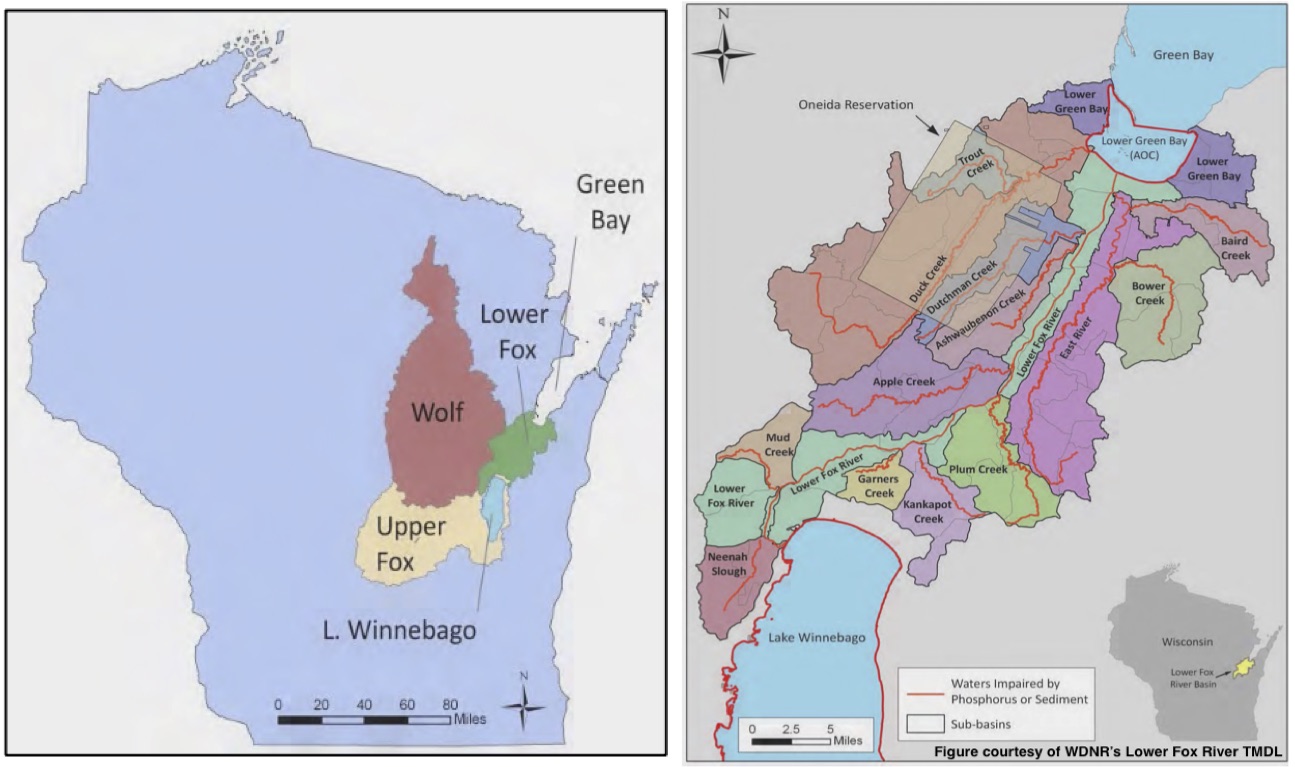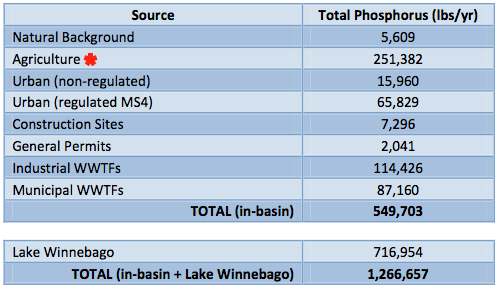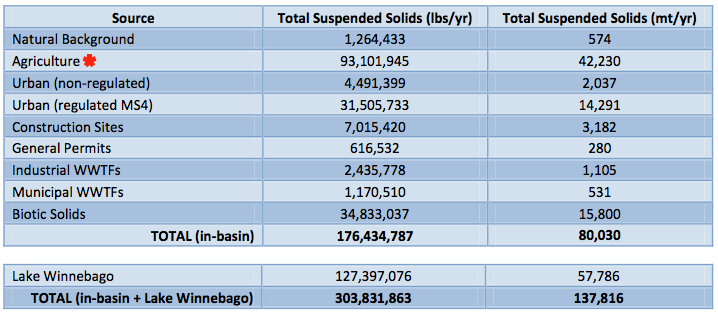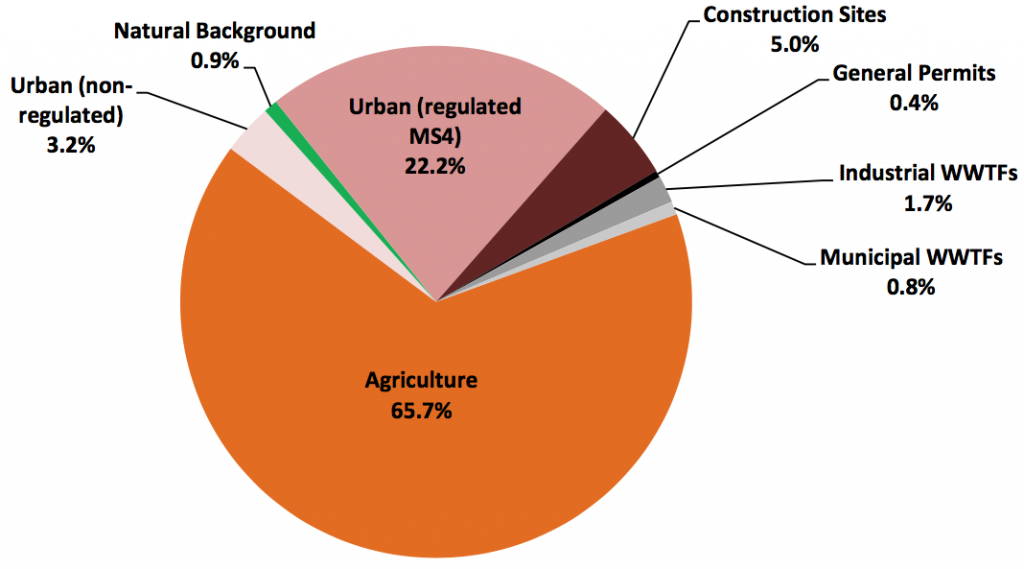In northeast Wisconsin, agriculture is not the only source of non-point pollution; however, it is the largest source. In the 2012 Total Maximum Daily Load and Watershed Management Plan for the Lower Fox River Basin and Lower Green Bay, the baseline sources of total phosphorus (TP) and total suspended solids (TSS) for Lower Green Bay were identified. To build a comprehensive understanding of the factors contributing to TP and TSS loading, the study looked at total loading from the three prominent river basins (Lower Fox River, Upper Fox River (including Lake Winnebago), and the Wolf River) (Figure 1), as well as specific sources from the Lower Fox River Basin (Figure 1).

Figure 1: Maps credit, Lower Fox River TMDL. The three major basins that contribute to the TP and TSS loading into Lower Green Bay (left). The Lower Fox River Watershed begins at the Lake Winnebago outlet and it empties into Lower Green Bay (right).
Results:
The results of the study show that while there are several factors contributing to nutrient and sediment pollution in Lower Green Bay, agriculture is the primary source for both TP and TSS. These results will help land owners, resource managers, and community leaders focus their efforts and resources to develop a long-term plan that will help address these issues in the most effective and efficient way possible.
The good news is that there are farming practices that can restore soil health, reduce runoff pollution, and improve water quality, all while supporting a strong regional economy. The Fox Demo Farms Network is working to identify which conservation practices are most effective and feasible in northeast Wisconsin.
Total Phosphorus:
Average annual total phosphorus (TP) loading into Lower Green Bay from the Lower Fox River Basin is an estimated 549,703 lbs./year, which is approximately 43 percent of the annual total phosphorus deposited into Lower Green Bay (Figure 3). Note that agriculture in the Lower Fox River Basin annually contributes 251,382 pounds of TP to Lower Green Bay (Figure 3), which represents nearly 46 percent of the Lower Fox River Basin’s annual TP loading (Figure 4).

Figure 3: Table credit, Lower Fox River TMDL. The Lower Fox River Basin contributes 549,703 lbs./year of TP (43% of the annual load) to the Lower Green Bay of which, agriculture contributes 251,382 lbs. annually.

Figure 4: Graph credit, Lower Fox River TMDL. In the Lower Fox River Basin, agriculture contributes nearly 46% of the annual TP load into Lower Green Bay.
Total Suspended Solids:
Average annual total suspended solids (TSS) into Lower Green Bay from the Lower Fox River Basin is an estimated 176,434,787 lbs./year, which is approximately 58 percent of the annual TSS deposited into Lower Green Bay (Figure 5). Note that agriculture in the Lower Fox River Basin annually contributes 93,101,945 pounds of TSS to Lower Green Bay (Figure 5), which represents nearly 66 percent of the Lower Fox River Basin’s annual TSS loading (Figure 6).

Figure 5: Graphic credit, Lower Fox River TMDL. The Lower Fox River Basin contributes 176,434,787 lbs./year of TSS (58% of the annual load) to the Lower Green Bay of which, agriculture contributes 93,101,945 lbs. annually.

Figure 6: Graphic credit, Lower Fox River TMDL. In the Lower Fox River Basin, agriculture contributes nearly 66% of the annual TSS load into Lower Green Bay (excluding biotic solids).
Learn more about conservation agriculture and the practices that focus on building healthy soils, reducing surface water runoff, and keeping sediment and nutrients on the land working for you and out of local waterways!



